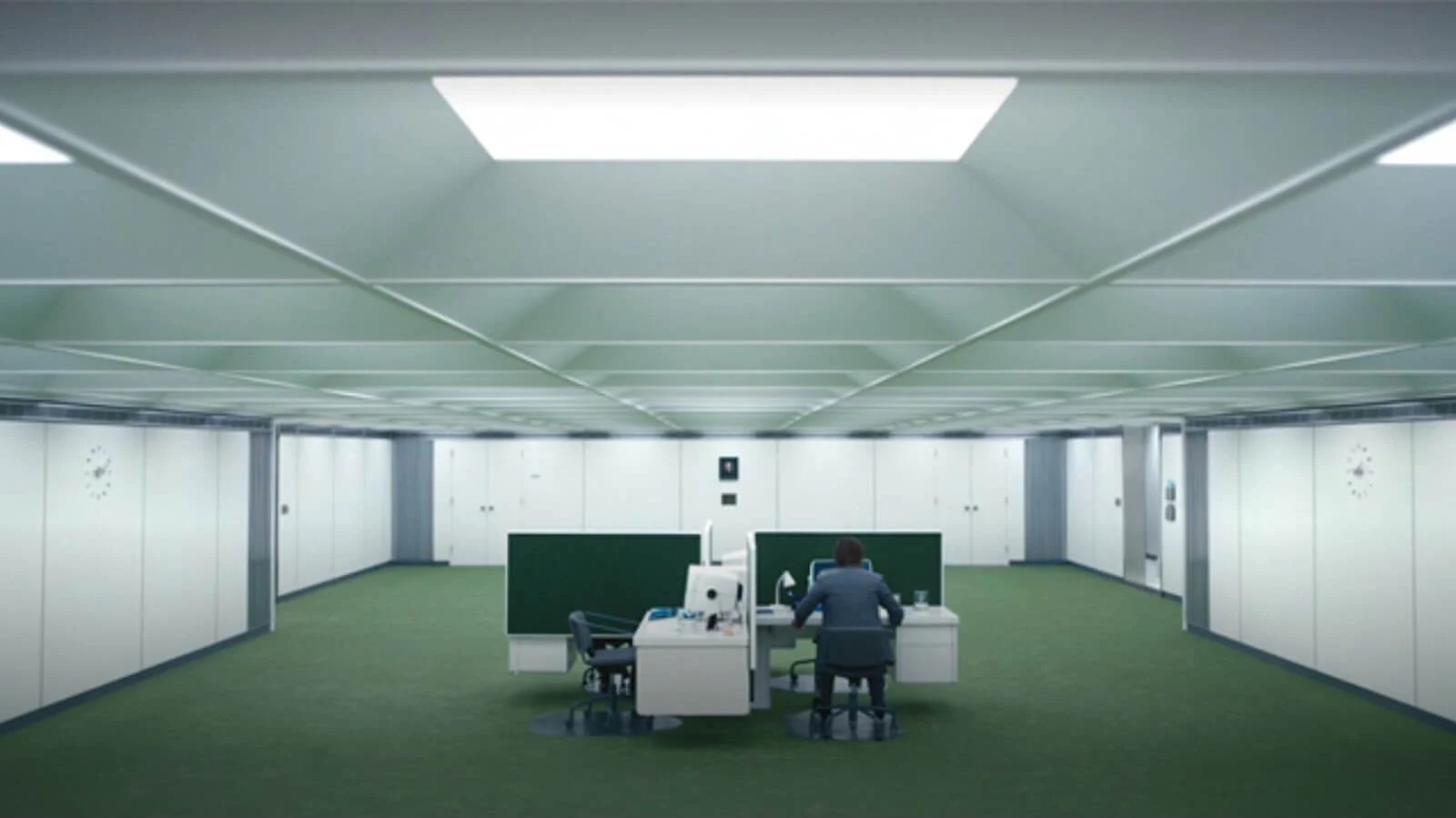Moving from a standstill. 'Severance' backrooms and liminal spaces
DOI:
https://doi.org/10.62336/unibg.eac.32.506Keywords:
Backrooms, Liminal spaces, Consciousness, Dystopia, UncannyAbstract
In the eerie and dystopian world of the TV series Severance, the employees of a mysterious conglomerate undergo a surgical operation severing the connection between work and personal life and they forget everything about life outside the office for the duration of the workday. The severance they undergo implies a motionless movement that switches the different levels of their consciousness. While at work, the characters walk and wonder through a labyrinth of pale, sad hallways that look like a space in which this aimless shift repeats itself. Severance, with its double, paradoxical movement, condenses various transmedia narratives focused on the slipping between different levels of consciousness and links its sinister world with the fictional concept of Backrooms: infinite and desert spaces, uncanny emptiness and the enchantment of a displacement that refers to immobility more than to space and movement.

Downloads
Published
How to Cite
Issue
Section
License
Copyright (c) 2024 Elephant & Castle

This work is licensed under a Creative Commons Attribution 4.0 International License.





